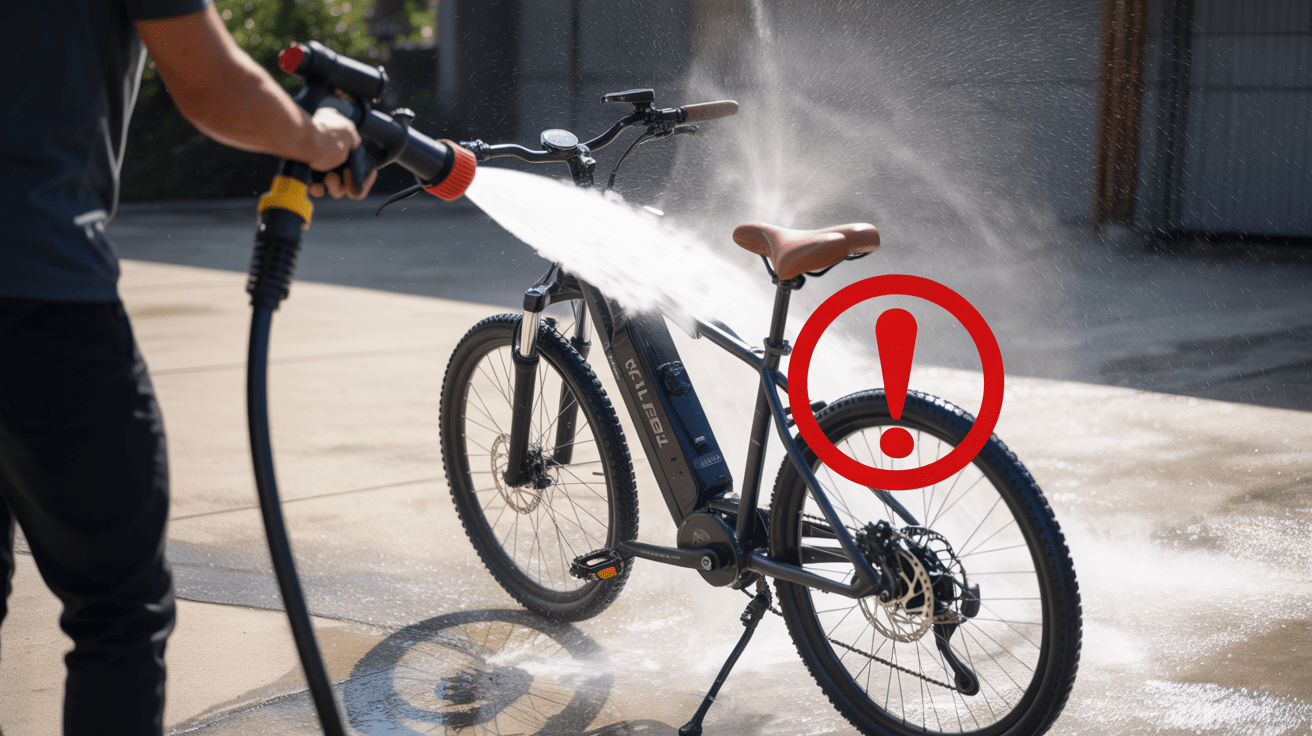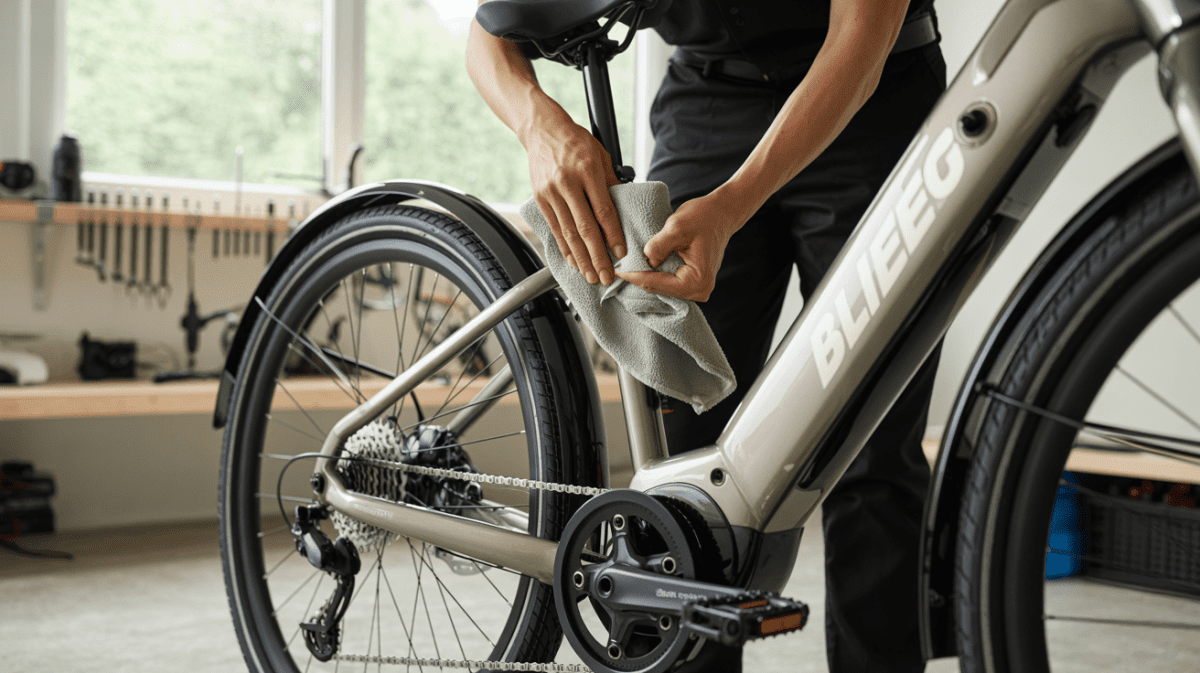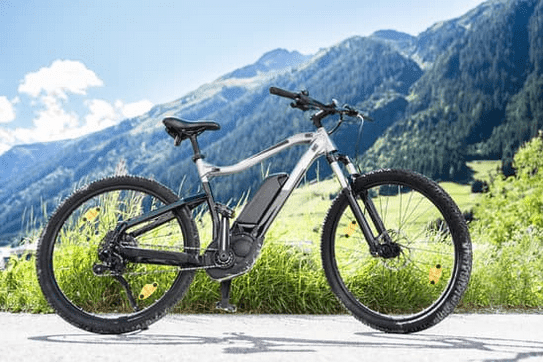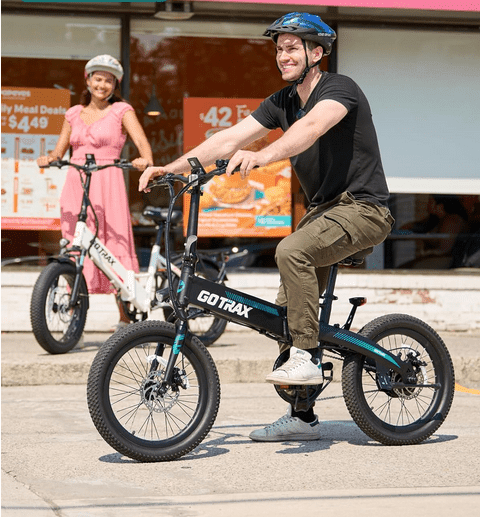How to Wash Your Electric Bike Without Damaging Electronics
Keeping your electric bike clean is essential for both performance and longevity, but the presence of sensitive electronic components makes the cleaning process more complex than with traditional bikes. Improper washing techniques can lead to water damage in motors, batteries, displays, and wiring – potentially resulting in costly repairs or even complete system failure.

In this comprehensive guide, we'll walk you through the safest methods to wash your electric bike while protecting its vital electronic systems. With the right approach, you can maintain your e-bike's appearance and functionality without risking damage to its sophisticated technology.
Essential Preparation Steps Before Washing
Proper preparation is crucial for safely cleaning your electric bike. Taking these preliminary steps will significantly reduce the risk of water damage to sensitive components.
Tools and Supplies You'll Need
- Two buckets (one for soapy water, one for rinsing)
- Soft microfiber cloths or sponges
- Soft-bristled brushes of various sizes
- Bike-specific mild cleaning solution (avoid harsh chemicals)
- Chain lubricant specifically designed for e-bikes
- Garden hose with low-pressure nozzle (never use pressure washers)
- Waterproof covers or plastic wrap for electronics
- Clean, dry towels for drying
- Silicone-based protectant spray (optional)
- Degreaser for drivetrain components

Important: Never use high-pressure water or steam cleaners on your electric bike. The forceful spray can penetrate seals and damage electrical components.
Powering Down and Protecting Electronics
- Turn off the power system completely. Locate the power button on your e-bike's display or battery and ensure the system is fully powered down before cleaning.
- Remove the battery if possible. Most e-bikes have removable batteries. If yours does, take it out and store it in a dry, safe place away from the cleaning area.
- Cover non-removable electronics. If your battery isn't removable, or for other fixed electronic components like the display and controller, cover them thoroughly with waterproof material.
- Seal electrical connections. Please pay special attention to connection points, using plastic wrap or waterproof tape to protect them from moisture.

Taking these precautions might seem time-consuming, but they're essential for preventing water damage to your e-bike's electrical system. A few extra minutes of preparation can save you from expensive repairs later.
Step-by-Step Guide to Washing Your Electric Bike
Now that you've properly prepared your e-bike for cleaning, let's walk through the washing process step by step. Remember to work methodically and avoid excessive water use throughout.
Initial Rinse: Removing Loose Dirt
Begin with a gentle rinse to remove loose dirt and debris. This prevents scratching the frame during the washing process.
- Position your e-bike in a stable location, ideally on a bike stand for better access to all areas.
- Using a garden hose with low pressure or a bucket of water, gently rinse the bike from top to bottom.
- Pay special attention to particularly dirty areas like the downtube and chainstays.
- Avoid directing water directly at electrical components, even if they're covered.

Frame Cleaning: The Safe Approach
With loose dirt removed, you can now focus on cleaning the frame and non-electronic components.
- Dip a soft sponge or microfiber cloth in your bucket of bike-specific cleaning solution.
- Clean the frame in sections, starting from the top tube and working your way down.
- Use gentle circular motions to remove dirt and grime without scratching the finish.
- For hard-to-reach areas, use a soft brush to scrub away dirt gently.
- Rinse each section with clean water from your second bucket before moving to the next area.
Keep water away from the bottom bracket, headset bearings, and wheel hubs. These areas contain bearings that can rust if exposed to excessive moisture.
Cleaning Around Electronic Components
The areas around your e-bike's motor, battery mount, and display require special attention.
- Use a barely damp cloth to wipe around electronic components and connection points.
- Clean the motor housing exterior with minimal moisture, being careful not to let water enter any openings.
- For the battery mount, ensure all contacts are completely covered, then gently wipe the exterior surfaces.
- If your display is covered, clean only the waterproof covering, not the display itself.
Drivetrain Cleaning: Chains and Gears
The drivetrain collects the most dirt and requires specific cleaning techniques.
- Apply a bike-specific degreaser to the chain, cassette, and chainrings.
- Let the degreaser sit for a few minutes to break down grime (follow product instructions).
- Gently scrub the chain with a brush while rotating the pedals backward.
- Use a specialized gear cleaning brush to clean between cassette cogs.
- Rinse thoroughly with minimal water to remove all degreaser.
E-bikes with mid-drive motors put more stress on the drivetrain components. Regular cleaning and lubrication of these parts is especially important for maintaining optimal performance and extending component life.
Final Rinse and Drying
Proper rinsing and thorough drying are critical final steps in the washing process.
- Using low pressure, gently rinse the entire bike to remove any remaining soap or degreaser.
- Start from the top and work your way down, ensuring all soap is removed.
- Use clean, dry microfiber towels to thoroughly dry all surfaces, paying special attention to areas where water might pool.
- Gently bounce the bike on its tires to dislodge any hidden water droplets.
- Allow the bike to air dry completely in a well-ventilated area before removing protective covers from electronics.
Essential Post-Wash Maintenance
After your e-bike is completely dry, there are several important maintenance steps to complete before your next ride.
Reconnecting and Checking Electronics
- Remove all protective coverings from electronic components.
- Inspect connection points for any signs of moisture before reconnecting.
- If you removed the battery, ensure the battery compartment is completely dry before reinstalling.
- Power on the system and verify all electronic functions are working properly.
Lubricating Moving Parts
Proper lubrication after washing is crucial for preventing rust and ensuring smooth operation.
- Apply e-bike specific chain lubricant to each link while rotating the pedals backward.
- Wipe off excess lubricant with a clean cloth to prevent dirt attraction.
- Apply a small amount of lubricant to derailleur pivot points.
- Consider using a silicone-based protectant spray on electrical contacts to repel moisture (follow manufacturer recommendations).

Post-Wash Inspection Checklist
- Check that all electronic displays function correctly
- Verify that the motor engages properly at all assist levels
- Ensure brakes are dry and functioning effectively
- Check that gears shift smoothly after lubrication
- Inspect tire pressure and add air if needed
- Verify all bolts and connections are secure
- Check that lights and accessories are working properly
- Look for any water that might have entered frame openings
Proper Storage After Cleaning
How you store your e-bike after cleaning affects its longevity and performance.
- Indoor storage: Whenever possible, store your e-bike indoors in a dry, temperature-controlled environment.
- Position: Store the bike in an upright position to prevent pressure on components.
- Battery care: For long-term storage, maintain the battery at approximately 50% charge and store it separately in a cool, dry place.
- Cover: If outdoor storage is unavoidable, use a breathable, waterproof bike cover after the bike is completely dry.

Special Considerations for Different E-Bike Types
Different electric bike designs require slightly different cleaning approaches. Here's how to adapt your cleaning routine based on your specific e-bike configuration.
Hub Motor E-Bikes
- Extra caution around wheel hubs: Since the motor is located in the wheel hub, be especially careful not to direct water at the hub area.
- Motor housing cleaning: Use only a damp cloth to wipe the exterior of the hub motor, never submerge or spray directly.
- Cable entry points: Pay special attention to where cables enter the hub motor, as these are potential water entry points.
Mid-Drive E-Bikes
- Bottom bracket area: The motor is integrated with the bottom bracket, so be extremely careful cleaning around this area.
- Drivetrain stress: Mid-drive motors put more stress on chains and gears, requiring more frequent cleaning and lubrication.
- Sensor cleaning: Carefully clean around cadence and torque sensors without disturbing their positioning.
Fully Integrated E-Bikes
Some modern e-bikes have batteries and electronics fully integrated into the frame, requiring special consideration.
- Frame openings: Be extremely cautious around any frame openings where water could enter and reach internal electronics.
- Charging ports: Ensure charging ports are thoroughly covered during washing and completely dry before use.
- Integrated displays: If displays are built into the frame or handlebars, use minimal moisture in these areas.
"The most expensive e-bike repair I regularly see in my shop is water damage to electrical components. Taking an extra five minutes during cleaning can save hundreds in repair costs."
Troubleshooting Common Post-Wash Issues
Even with careful washing, you might occasionally encounter issues after cleaning your e-bike. Here's how to address common problems.
First, ensure everything is completely dry. Remove the battery if possible and check for moisture in connections. Let all components dry thoroughly for 24-48 hours in a warm, dry environment before reconnecting. If the error persists, contact your e-bike manufacturer or a certified repair shop.
Check all connection points between the battery and the system. Ensure the battery is properly seated and charged. Look for any visible moisture in connections and allow additional drying time if needed. Try removing and reinstalling the battery after confirming all contacts are dry.
Unusual noises are typically not normal and could indicate water has entered the motor housing. Stop using the bike immediately to prevent further damage. Allow extended drying time in a warm environment. If the noise persists, consult with a professional e-bike technician as soon as possible.
Signs of water damage to a battery include: reduced range, failure to charge completely, unusual heating during charging, visible corrosion on contacts, or error codes on your display. If you suspect water damage to your battery, do not attempt to charge it, as this could pose a safety risk. Consult with your manufacturer or a certified e-bike shop.
Recommended Products for Safe E-Bike Cleaning
Using the right products can make e-bike cleaning both safer and more effective. Here are some recommended supplies specifically designed for electric bikes.
E-Bike Safe Cleaner
Specially formulated to clean effectively without damaging sensitive electronic components. pH-neutral and safe for all frame materials.

E-Bike Microfiber Kit
Set of specialized microfiber cloths in various sizes for cleaning different e-bike components. Color-coded to prevent cross-contamination between drivetrain and frame.
E-Bike Chain Lubricant
Specially formulated for the higher torque of electric motors. Provides superior protection against wear while repelling water and preventing corrosion.
Conclusion: Maintaining Your E-Bike Investment
Regular, proper cleaning is one of the most important aspects of electric bike maintenance. By following the guidelines in this article, you can keep your e-bike looking great and performing optimally without risking damage to its sensitive electronic components.
Remember that the key principles of safe e-bike washing are: minimize water exposure to electronics, use gentle cleaning products, dry thoroughly, and perform proper post-wash maintenance. These simple steps will help extend the life of your electric bike and ensure reliable performance for years to come.
Keep Your E-Bike in Perfect Condition
Download our comprehensive e-bike maintenance checklist to ensure you never miss an important step in caring for your electric bike.
Get Your Free Maintenance Checklist



